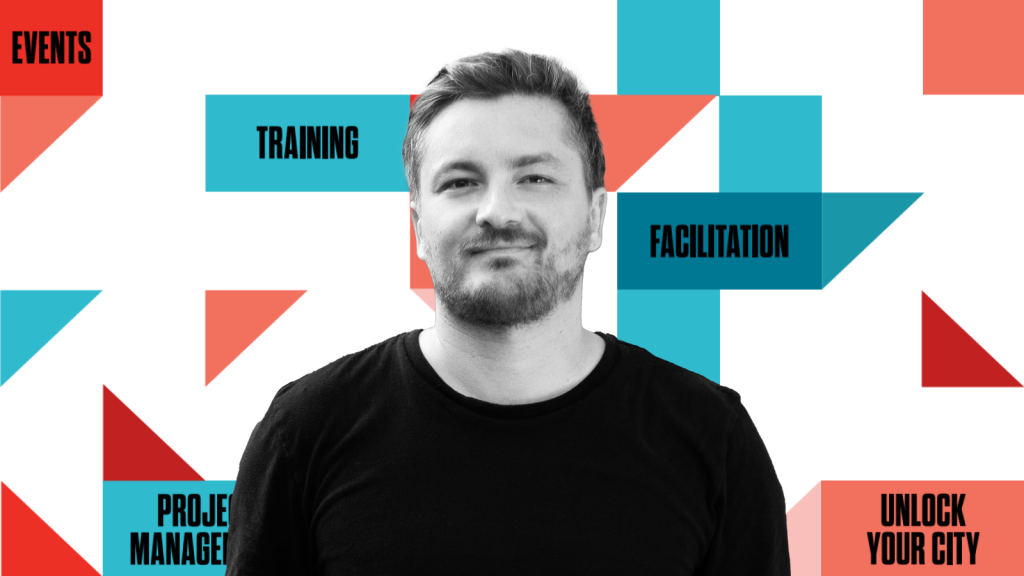Democracy Technologies: You have years of hands-on experience in facilitating citizen participation initiatives. What would you say are the most important things that the people implementing participatory processes need to learn?
Tomáš Rákos: It’s easy to go through catalogues of different participation methods or formats. But actually implementing these methods, and turning them into practical projects that minimise the risks – that’s the hard part. This means getting to grips with things like project management or monitoring and evaluation frameworks. It also means learning to quickly identify potential risks and act accordingly. Ultimately, you need to be able to describe, anticipate, and successfully implement the whole lifecycle of the project.
As a field of expertise, participation can be very tricky. It really requires practical field experience in order to pull off a successful project. Our goal with this course is to make life easier for anyone who is planning or already implementing some kind of participatory project. We want to save them time, but also reduce the stress of the whole process by ensuring they don’t have to rediscover what has already been discovered by other people.
DT: The content of this course was years in the making. Can you tell us about the contexts where you have already used and refined it?
Rákos: The content of the course has been tried and tested across a whole range of different settings. Most of our projects start with teaching our clients or partners the things covered in this course.
We have been lucky to work on all kinds of participation projects. The Participation Factory team has done literally hundreds of projects that vary greatly. We have worked on participation processes for strategy making, design of public spaces, planning, urban design, renovation, change management, architectural projects, as well as participatory budgeting.
We work with different types of social demographic groups, anything from young people to seniors. As we like to say, we’ve been in the trenches a lot, and we learned the hard way what works and what doesn’t. And we really hope that through this course, we will be able to pass on this experience and know-how to others.
DT: Who do you think would most benefit from the course?
Rákos: Anyone can benefit from the course. It is for anyone who sees participation as an important part of their projects.
When we put the course together, we mostly had in mind people active in the public sector. This means public officials, either in small municipalities, cities, regional governments and ministries. It also means local politicians, a group of people who often have multiple roles simultaneously. We believe that this target group is hugely underappreciated. They basically hold the key to success, and the key to serving their own communities better.
DT: What things can go wrong when implementing participation without the right foundation?
Tomas: A lot can go wrong. Participatory planning is a multidisciplinary approach to finding solutions by working with different target groups. There are many disciplines that need to be included. It requires at least a basic understanding of data facilitation techniques, process design, project management, monitoring and evaluation, but also communication and digital technology.
The risks are huge. When things go wrong, this leads to a mistrust among the group of people that the participation project is aimed at. It’s absolutely vital to do everything possible to create a sense of a safe space, transparency, as well as logical and simple rules. The audience, the public, and the target groups who you intend to work with need to be able to really trust the project owner as well as the whole process. Once the trust is lost, it can take years to regain it.
DT: Is there one thing that people you have worked with have misunderstood most often? How is it addressed in the course?
Rákos: People underestimate the role and value of good, solid project management. Very often, we see good intentions when it comes to participation, but at the same time, limited or bad project design and management. I mean anything from finding a suitable method and making clear decisions on what to do when, all the way down to proper documentation.
This is something we cover in the course, because managing a participatory project is a very specific type of project management. It’s not rocket science, but a certain amount of experience is necessary to get it right. Once this type of project infrastructure is set up, you can really mitigate the potential conflicts or problems connected to the project.
DT: What role does digital participation play in the course?
Nowadays, digital tools are the bread and butter of any participatory project. We’ve experienced a huge surge in the use of these tools, especially after the Covid pandemic. I would say that the range of projects and processes that can be successfully carried out without these tools is rapidly decreasing.
We are big advocates of the so-called multichannel participatory approach. This means being very transparent and very inclusive, as well as offering a wide range of channels for people to get engaged.
Find more information and register for the “Participate Practically” course.
